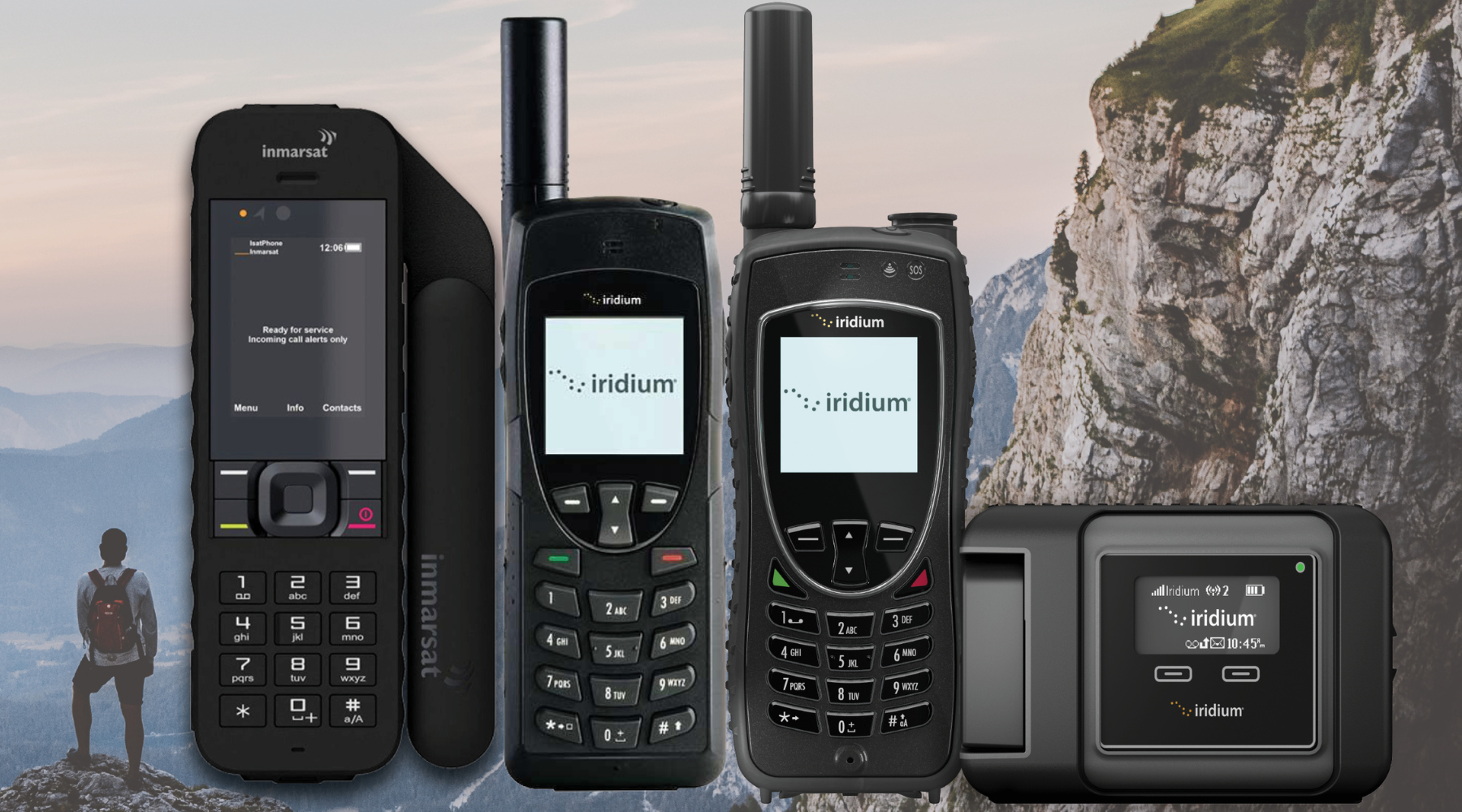
Which satellite phone should I buy?
by Peter Davidson on Nov 16, 2023Which Satellite Phone Should I Buy?
This might be the first time you have considered buying a satellite phone and don’t know where to start. The below information has been written to provide you with all of the tools you will need to buy your first phone. Before we get into how satellite phones work, please ask yourself the below questions. Once you have an idea as to your answers, the rest of the information should guide you towards the right phone for you. If you would like more help, our would prefer to talk to a person straight way, please feel free to reach out to one of our staff on chat or over the phone on 0415263750.
- Where am I going to need to use my satellite phone?
- How often do I think I will use my satellite phone?
- How long will I need my satellite phone connected?
How Do Satellite Phones Work?
Satellite phones might sound technical and hard to use; however, the reality is they are easy to use once you know how. Satellite phones work by a phone on the ground connecting to a satellite in the sky (it’s that easy). The super important part of the sentence before, is that the phone needs to connect to a satellite in the sky. The way a phone is connected to a satellite is through a radio wave. The radio wave is special and can’t travel through physical barriers. A physical barrier is anything sold, like a tree, a roof of a building, or the roof of a car. The radio wave can travel through glass and plastic but not metal, wood or concrete.
Now that you know you can’t use a satellite phone indoors; the next big key is making sure your phone can connect to a satellite. Unlike the way it is made out in the movies, a satellite isn’t always just above you (like your own person satellite). Sometimes a satellite might be in a certain direction, so depending on which satellite phone you buy, you might need to make sure the antenna on the phone is facing that direction.
The 3 different satellite constellations.
There are 3 satellite constellations that phones can connect too. Each constellation has its own radio frequency, which means only phones made by their constellation will work with their satellite. Eg. only a Thuraya phone will ever work with a Thuraya satellite. Of the 3 networks, 2 are what we called High Earth Fixed satellites and 1 is a moving low earth satellite. This means that 2 of the networks have satellites that are high above the earth and are fixed in place. The satellites are in a stationary position and never move, so when you want to connect to these satellites, they will always be in the same spot. The low earth moving satellite, on the other hand, has lots of small little satellites that are moving around the earth constantly. The idea behind the moving network, is that you will always have a satellite above you at any given time.
This brings us to “Line of Sight” (LOS). LOS is the most important side of using a satellite phone. Understanding which network you are using, and where the satellite is positioned, will make using your satellite phone very easy. For example, if you are using the network with the satellites that are always moving around the earth and you are in a clearing (no buildings around you) than you can pull out the antenna, point it towards the sky and you will get a signal to make a call. The phone will register to the network, and you can make your call or send your text message.
When using a satellite phone on a moving network (Iridium), you might need to wait for the satellite to come into view before the phone will register.
By waiting 5-10 minutes you now have coverage in the same location you previously couldn't get a signal in.
The other type of network you can purchase is a high stationary satellite network (used by Thuraya & Inmarsat). Like we were talking about before, LOS is key to being able to register your phone and make a call. However, unlike the moving constellation, the fixed satellites require you to point the antenna in the direction of the fixed satellite. For example, the satellite might be to the Northeast or Northwest of Australia (the fixed satellites are always in the equator where they can see more of the earth). The direction of the satellite is very important because you need to make sure you are facing the antenna in the correct direction, and that you have no physical structures in the way. The below images help to demonstrate how LOS works with a fixed satellite.
When using a satellite phone on a fixed constellation, you may have to move yourself to get a signal from the satellite.
By moving a matter of meter's you now have the ability to make a call on the fixed satellite networks (Thuraya & Inmarsat)
Due to the fact that the fixed satellites are all based on the equator, the further south you go in Australia the more likely you will have physical barriers between you and the satellite (think Victoria and Tasmania). Hopefully you have started to understand the basics behind satellite phones and using them in Australia. Now that we understand about Line of site and the different constellations that exist, we can go into which constellations are best for which parts of Australia, and what network you should buy.
Satellite Constellations
Thuraya – Fixed (High Stationary)
Thuraya’s satellite is located to the Northwest of Australia and is fixed high on the equator. To use the Thuraya network, you will need to make sure the end of the antenna is facing the satellite at all times.
Thuraya Global Coverage Map:
Inmarsat – Fixed (High stationary)
Inmarsats satellite is located to the Northeast of Australia and is fixed high on the equator. To use the Inmarsat network, you will need to make sure the end of the antenna is facing the satellite at all times
Inmarsat Coverage Map:
Iridium – Moving (low earth)
Iridium has 66 smaller satellites which are always moving around the earth, at any given time, Australia normally has 2 satellites above us. This means you simply need to pull out the antenna on the phone and point towards the sky
Iridium Coverage map: - Global
So which network should I buy?
If you are planning on traveling all around Australia and want the best coverage anywhere in Australia, the Iridium network is the ideal solution for you. However, the Iridium network’s phones and plans are the most expensive on the market. Where costs are critical, Thuraya has proven to provide a good balance between price and coverage. Thuraya has 1 satellite in our region of the earth, which is located on the equator. Due to the fixed satellite sitting to the northwest of Australia, Thuraya has difficulties with line of sight to the satellite in mountainous regions of Tasmainia, Victoria & New South Wales. If you have a good understanding of how to use your Thuraya handset and can get to a top of a mountain or a hill in those areas, you will still be able to make a call. In northern and central Australia, where the land is mostly flat and you are closer to the equator, Thuraya performs extremely well. However, as mentioned earlier in this guide, making sure the antenna is always facing the direction of satellite will ensure a clear quality phone call.
If you are looking for a solution to use mostly in eastern Australia or globally, Inmarsat offers close to global coverage using a fixed satellite network. With most of Australia’s largest mountain ranges on the east coast of Australia, the Inmarsat network will perform better than Thuraya in these regions, however, not as well as Iridium. If you are looking for a solution to use in PNG, Inmarsat offers the best coverage, as their satellite sits just to the east of PNG in a fixed location.
Overall, having a good understanding of where you would like to use your phone in the future and your budget, will assist with ensuring you get the right phone for you.
